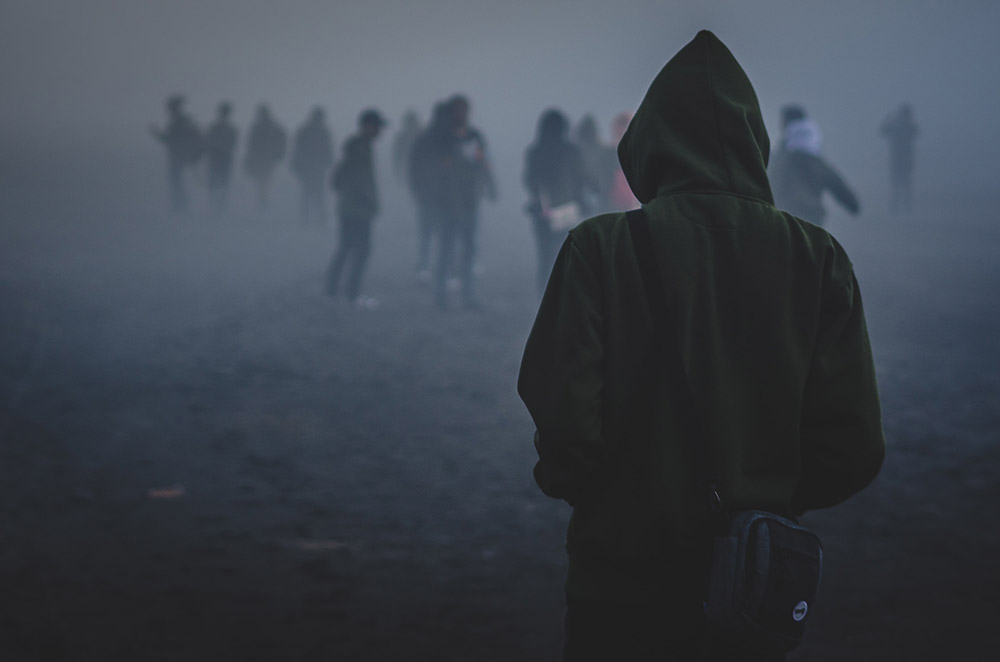Statistics Canada’s report on suicide among First Nations people, Métis and Inuit (2011-2016) released June, 2019, found that Indigenous people in Canada die by suicide at a rate three times higher than that for non-Indigenous Canadians. The preamble starts by noting:
“Suicide rates have consistently been shown to be higher among First Nations people, Métis and Inuit in Canada than the rate among non-Indigenous people; however, suicide rates vary by community, Indigenous group, age group and sex. The historical and ongoing impacts of colonization, forced placement of Indigenous children in residential schools in the 19th and 20th centuries, removal of Indigenous children from their families and communities during the “Sixties scoop” and the forced relocation of communities has been well documented. These resulted in the breakdown of families, communities, political and economic structures; loss of language, culture and traditions; exposure to abuse; intergenerational transmission of trauma; and marginalization, which are suggested to be associated with the high rates of suicide.”1
An important recognition is the historical conditions that contribute to fractures of self-worth, opportunities, and alienation driving too many young people to the depths of depression, even a half century after the well documented injustices. Impacts of which continue to be transmitted and inherited by young people who were not even living then.
Yet, once again, the systemic reaction to failed futures and the resulting consequences continue to rely too heavily on institutionalized responses, rather than on humanitarian ones; responses that rely too highly on effective jails, corrections systems, and legislation for control.
Highly effective institutional systems that gobble up huge amounts of revenues for policing, social workers, probation officers, nurses, and teachers; each adept and replete with quantitative justifications for their effective and efficient management of resources. But in spite of the effectiveness and efficiency, too many lives continue to be marginalized, warehoused and lost.
And in many cases, the cost of issuing an apology and paying compensation after the fact are far less costly than actually instituting the more intensive application of social care and accountability necessary to mitigate ongoing cycles of crime, violence, neglect and marginalization.
If this were not the case we would not be repeating the same policies, guised in politics of law and order, entitlements and rights, and the otherization of peoples and issues that have so clearly failed in the past; and systems that seem to thrive on their ability for self perpetuation.
The late auditor general Michael Ferguson warned and cautioned as far back as 2015 that Correctional Service of Canada officials (CSC) were failing to prepare offenders for parole in a timely fashion, driving up prison costs by nearly $100 million a year and undermining efforts to prepare offenders to re-enter society without committing more crimes.2
Three years later the Auditor General again reported in Report 6: Community Supervision—Correctional Service Canada, of the deteriorating support for those subject to the corrections system. Amongst his findings:3
That CSC did not properly manage offenders under community supervision, did not give parole officers all the information they needed to help offenders with their health needs, and that parole officers did not meet with offenders as often as they should have.
That CSC was not able to properly monitor many offenders under community supervision.
That the number of offenders released into community supervision had grown and was expected to keep growing.
That CSC had reached the limit of the numbers of offenders it could house in the community, and that it did not have a long-term plan to respond to its housing pressures.
That it could take CSC more than two years from the time a site was selected with a community partner to the time an offender was placed at a facility, and that these shortages were likely to get worse.
How much has really changed since Michael Ferguson’s report, and how much money has been spent on a system that has deteriorated and continues to deteriorate remains unclear.
According to The Office of the Parliamentary Budget Officer: Update on Costs of Incarceration 22 March 2018, CSC’s expenditures associated with custody centers in 2016-17 alone totaled $1.63 billion ($114,587 per inmate) of which $1.57 billion ($109,971 per inmate or ninety-six percent) was attributable to CSC custody program.4
And as to the effectiveness of CSC, despite research and performance measurement in the field of corrections and criminal justice, CSC still lacks a regularly maintained, national recidivism database- a valuable indicator of the effectiveness of “corrections”.5 According to reports the last time CSC fully measured its two-year reconviction rate in 1995, it stood at forty-one percent, compared to 20 percent for Norway.6
What we do know is that in 2015-2016, Indigenous people represented almost one-quarter of the total federal offender population. A state of affairs characterized by Supreme Court Chief Justice Richard Wagner as a serious problem that is “unacceptable”.7
This, despite what some in frustration have called, a tinkering with the system – changes to the Criminal Code requiring judges to consider sanctions other than incarceration, for all offenders but particular attention to the circumstances of Indigenous offenders, following the 1999 decision by the Supreme Court of Canada in Regina vs. Gladue; a decision that should have changed incarceration patterns.8
It is considered tinkering because it would again require the Supreme Court, in 2012, through the decision on Regina vs. Ipeelee, to remind the judiciary that they were mandated to follow the legislation and decision in Gladue.
Despite these landmark interventions, Aboriginal adults represent twenty-eight percent of admissions to provincial/territorial correctional services and twenty-seven percent of admissions for federal correctional services, up from twenty-seven percent and twenty-one percent respectively from 2006/7, while representing only 4.1 percent of the Canadian adult population in 2016/2017.9
Among the provinces in 2016/2017, Aboriginal adults accounted for the largest proportion of admissions to custody in Saskatchewan (seventy-six percent) and Manitoba (seventy-four percent).10
Aboriginal youth accounted for forty-six percent of admissions to correctional services in the ten reporting jurisdictions in 2016/2017, while representing eight percent of the general youth population in those same jurisdictions.11
These are the cold impersonal numbers of broken and failed lives that contribute to, and conceal far more tragic consequences. They are the mathematical impersonalization of systemic institutionalization.
Statistics can impersonalize even the worst human tragedies, and news reports have not been short on the tragic consequences of desperation reflected in instances of First Nations suicides.
For decades the suicide rates among First Nations, Inuit, and Métis people in Canada have been alarmingly higher than for the rest of Canadians. These suicides, in small and closed knit communities with close family ties, result in immense grief, bereavement, stigmatization and despair, particularly when the loss is of a young person.
First Nations people living on and off reserve die by suicide at much higher rates than non-Indigenous people. In some instances the suicide rate for children and youth has been reported to be ten times higher among males and twenty-two times higher among females between 2005 and 2007. In fact, suicide is one of the leading causes of death among children and youth in areas with a high proportion of First Nations people and in Inuit Nunangat.12
In 2013, there were thirty-one suicides by Aboriginal people in Ontario, up from eleven in 1991. Overall, from 1991 to 2013, there were 468 suicides by Aboriginal people in Ontario, almost half of those by people twenty-five or younger.13
In the spring of 2016 the remote Manitoba community of Pimicikamak Cree Nation, known as Cross Lake declared a state of emergency after six suicides within two months and 140 attempts within a two weeks period.14
During the summer of 2019 the God’s Lake First Nation, about 550 kilometres northeast of Winnipeg, experienced a rash of suicides that left four young people dead, twenty-two attempted suicides, and an epidemic of meth and alcohol addictions.
In October of 2019 Chief Eugene Hart of the Sheshatshiu Innu First Nation, a community of roughly 1,300 people, declared a crisis following ten suicide attempts in less than a week.15
In November of 2019, the Makwa Sahgaiehcan First Nation in northwest Saskatchewan declared a state of crisis following seven suicides since 2016, of which the first was a thirteen-year-old girl followed by a ten-year-old girl. A seventeen-year-old boy died in 2017 and a fourteen-year-old girl in 2018. This year, a seventeen-year-old girl took her life in July and a fourteen-year-old girl in November.16
While these statistics may come as a surprise to some, they have been the tragic reality faced by First Nations communities across Canada for decades. There is a sense of helplessness in the statements of chiefs and elders struggling to alleviate the deep pain and isolation felt by their young peoples. There is a sense of deep caring and desperation in their calls for help, repeated across the country.
The new report on Indigenous suicide in Canada, released at the end of June, is aimed at providing a comprehensive picture of the crisis, unfortunately limited to the data collected during as part of the 2016 census and, therefore, is already four years and many lives short.
The ongoing impacts of disproportionate sentencing, forced placement of children in foster care, removal of young men and women from healthy social development, and deprival of employable skills and opportunities today continues to perpetuate the impact of the “Sixties scoop” and forced relocation of communities of the past. Impacts of which will continue to be transmitted and inherited by young people not yet living.
Given these statistics, how can one possibly be surprised with disproportionately higher suicide rates among First Nations peoples?
The Assembly of First Nations National Chief, Perry Bellegarde, notes: “The time is now for bold vision and decisive action.”17 Perhaps it is not asking too much to expect the religious institutions that so energetically took to saving souls through assimilation to now respond as energetically to saving lives. A new bold vision must focus our gaze towards countries like the Netherlands where since 2014, twenty-three prisons have been shut, turning into temporary asylum centres, housing and hotels.
The Netherlands now has Europe’s third-lowest incarceration rate, at 54.4 per 100,000 inhabitants. A system that has achieved a reduction in prison sentences from 42,000 in 2008 to 31,000 in 2018 – along with a two-thirds drop in jail terms for young offenders. This while recorded crimes plummeted by 40 percent in the same period.18
Big bureaucracy and billions spent on corrections has not offered the solutions other jurisdictions have achieved.
Michael Ferguson’s report in 2016, four years ago referenced to an additional ten-year period prior to that during which little or no progress had been achieved with regards to First Nations issues:
“This is now more than a decade’s worth of audits showing that programs have failed to effectively serve Canada’s Indigenous peoples. Delivering effective programming requires leadership. By leadership, I include federal, provincial, territorial, and First Nations levels—with most of the responsibility falling on the federal government, though all levels have some responsibility. Until a problem-solving mindset is brought to these issues to develop solutions built around people instead of defaulting to litigation, arguments about money, and process roadblocks, this country will continue to squander the potential and lives of much of its Indigenous population.”19
There is nothing that should be more important to a society than the care and safety of its children; a universal value across race, class, religion or status. The reality is that this value has been conditional on those children being of ones’ own community. Children of others should not seem to mean less.
More than ever we need a problem-solving mindset to develop solutions built around people instead of defaulting to litigation, institutionalization, and simply spending more money without meaningful outcomes.
Federal, provincial, and local governments need to strengthen partnership with Indigenous organizations to develop strategies to recruit, retain and train Indigenous partners to support wider access to mental health services. At the same time communities themselves need to widen support and long-term capacity, building in health and mental health responses and to expect meaningful and transformative change.
There can be no solution without federal and provincial departments, and the Assembly of First Nations working together to bring about meaningful educational, healthcare, and social support systems that provide support on a per community based approach; for developing strategies that recognize different needs for different communities and for distinct measures.
Perhaps most crucially, communities also need to look for a helping hand at the end of their arms, grass roots movements, that are no longer willing to let governments and politicians get away with the easy solutions – payouts and promises without real solutions and outcomes.
Anil Anand is a research associate with the Frontier Centre for Public Policy. Anil served as a police officer for 29 years; during his career some of his assignments included divisional officer, undercover narcotics officer, and intelligence officer. He has worked in Professional Standards, Business Intelligence, Corporate Communications, the Ipperwash Inquiry (judicial public inquiry), and Interpol.
——————————————————————–
Mental wellness resources available for First Nations people, Métis and Inuit:
Hope for Wellness: Help Line: 1-855-242-3310
Live chat: www.hopeforwellness.ca
Kamatsiaqtut Help Line
Toll Free 1-800-265-3333
In Iqaluit 1-867-979-3333
Kids Help Phone
Toll Free 1-800-668-6868
Text 686868 (no data plan, internet connection, or app required)
Live chat: www.kidshelpphone.ca
Indian Residential Schools Crisis Line: 1-866-925-4419
Additional resources: Suicide prevention www.canada.ca/en/public-health/services/suicide-prevention.html
[show_more more=”See Endnotes” less=”Close Endnotes”]
Endnotes:
- Stats Canada, National Household Survey: Aboriginal Peoples
Suicide among First Nations people, Métis and Inuit (2011-2016): Findings from the 2011 Canadian Census Health and Environment Cohort (CanCHEC); https://www150.statcan.gc.ca/n1/pub/99-011-x/99-011-x2019001-eng.htm
- The Star, Canada’s prisoners aren’t being prepared properly for release, auditor general warns; Canada’s prisoners aren’t being prepared properly for release, auditor general warns
- 2018 Fall Reports of the Auditor General of Canada, specifically Report 6: Community Supervision—Correctional Service Canada; http://www.oag-bvg.gc.ca/internet/English/parl_oag_201811_06_e_43204.html
- Office of the Parliamentary Budget Office, Updates of Costs of Incarceration; https://www.pbo-dpb.gc.ca/web/default/files/Documents/Reports/2018/Update%20Incarceration%20Costs/Update%20on%20Costs%20of%20Incarceration_EN.pdf
- Ivan Zinger, Correctional Investigator, Office of the Correctional Investigator Annual Report 2017-2018; https://www.oci-bec.gc.ca/cnt/rpt/annrpt/annrpt20172018-eng.aspx#s1
- The Globe and Mail, Canada’s investment in prison system isn’t bringing results, watchdog reports; https://www.theglobeandmail.com/canada/article-canadas-investment-in-prison-system-model-isnt-bringing-results/
- CTV News, High Indigenous prison rate ‘unacceptable’: Supreme Court chief justice; https://www.ctvnews.ca/canada/high-indigenous-prison-rate-unacceptable-supreme-court-chief-justice-1.3984924
- Department of Justice, Spotlight on Gladue: Challenges, Experiences, and Possibilities in Canada’s Criminal Justice System; https://www.justice.gc.ca/eng/rp-pr/jr/gladue/p3.html
- Statistics Canada; Adult and youth correctional statistics in Canada, 2016/2017; https://www150.statcan.gc.ca/n1/daily-quotidien/180619/dq180619a-eng.htm
- Statistics Canada; Adult and youth correctional statistics in Canada, 2016/2017; https://www150.statcan.gc.ca/n1/daily-quotidien/180619/dq180619a-eng.htm
- Statistics Canada; Adult and youth correctional statistics in Canada, 2016/2017; https://www150.statcan.gc.ca/n1/daily-quotidien/180619/dq180619a-eng.htm
- Stats Canada, National Household Survey: Aboriginal Peoples
Suicide among First Nations people, Métis and Inuit (2011-2016): Findings from the 2011 Canadian Census Health and Environment Cohort (CanCHEC); https://www150.statcan.gc.ca/n1/pub/99-011-x/99-011-x2019001-eng.htm
- Aboriginal youth suicide rises in Northern Ontario; https://www.cmaj.ca/content/cmaj/187/11/E335.full.pdf
- Globe and Mail, Manitoba First Nation declares state of emergency over suicide epidemic; Manitoba First Nation declares state of emergency over suicide epidemic
- CTV, Sheshatshiu Innu First Nation in Labrador declares suicide crisis; https://atlantic.ctvnews.ca/sheshatshiu-innu-first-nation-in-labrador-declares-suicide-crisis-1.4662157
- CBC, Suicides, including a 10-year-old girl, trigger state of crisis at Makwa Sahgaiehcan First Nation; https://www.cbc.ca/news/canada/saskatchewan/makwa-sahgaiehcan-state-of-crisis-1.5369116
- The Sudbury Star, National focus needed on suicide crisis among Indigenous youth: AFN; National focus needed on suicide crisis among Indigenous youth: AFN
- The Guardian, Why are there so few prisoners in the Netherlands?; https://www.theguardian.com/world/2019/dec/12/why-are-there-so-few-prisoners-in-the-netherlands
19. Office of the Auditor General of Canada, 2016 Fall Reports of the Auditor General of Canada; https://www.oag-bvg.gc.ca/internet/English/parl_oag_201611_00_e_41829.html
[/show_more]



